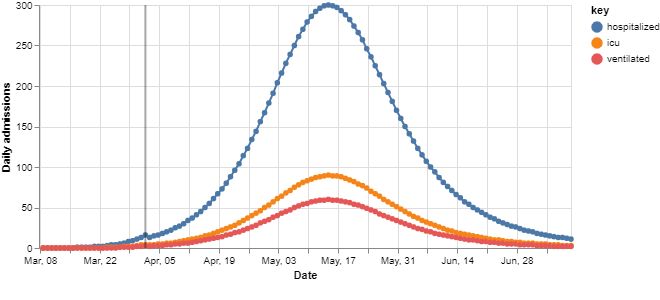A locally informed simulation model may help hospital administrators better prepare for capacity strain during the COVID-19 pandemic, according to a study published today in Annals of Internal Medicine.
The COVID-19 Hospital Impact Model for Epidemics, or CHIME, includes a user-friendly interface so that hospital leaders can, at any time, independently estimate the time until their hospitals' capacities would likely be exceeded. The model also predicts the intensity of the surge, including need for ward and intensive care unit (ICU) beds and ventilators, and the duration of time that each hospital would experience a demand in excess of capacity, enabling users to plan for upcoming equipment and clinical staffing demands. A brief research report is published in Annals of Internal Medicine.
Recognizing a need in their own hospital, researchers at the University of Pennsylvania Health System found that an SIR epidemiologic model could be used to make short-term projections about hospital capacity strain early in the course of an epidemic. The team explored a range of scenarios based on published data from other regions of the world and quickly developed a flexible interface that provides most likely estimates, as well as best- and worst-case estimates in real time. Their model informed many key health system decisions, such as reducing elective surgeries and declining outside transfers, well before the system was actually strained, and also provided multiple other insights that helped health system leaders prepare, react, and respond effectively.
The CHIME tool, with development led by the Penn Predictive Healthcare Team, is available for free to the public at http://penn-chime.phl.io.

Be the first to comment on "Locally Informed Simulation Model Predicts Hospital Capacity Needs During COVID-19"